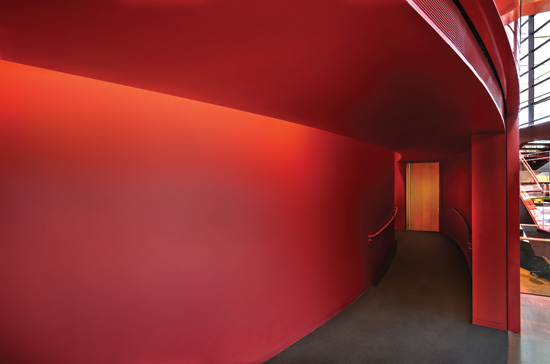Doorway to Distinctive Design
Learning Objectives:
- Identify common wood door species and wood veneer cuts, matching, and patterns that provide a basic understanding of wood veneer for architectural doors.
- Properly specify complete veneer requirements.
- Discuss high-pressure decorative laminates from an aesthetic and performance viewpoint, identifying design considerations for a choice that is cost effective and contributes to a healthy, durable, and pleasing interior environment.
- Describe how wood veneer and laminates contribute to sustainability and are consistent with green building goals.
Credits:
Throughout history, the door has been a compelling design element…the arch top doors of the Romans…medieval doors wrought in bronze…the elaborately carved doors of the Renaissance, the plain doors of the Shakers—all different, all distinctive. No matter what their time period, designers throughout the centuries would no doubt recognize the door as an opportunity to make an aesthetic statement. This is no less true today, as architects choose from an unprecedented array of styles to specify a door consistent with their vision, quality goals, and performance requirements.
In terms of materials, the natural warmth and beauty of wood veneer remains a classic choice for interior doors, complete with the unique physical characteristics that give it depth and interest. Also widely used today are high-pressure decorative laminate (HPDL) doors, which are available in a full range of colors, patterns, wood grains, and custom solutions. This article will discuss the characteristics and design considerations pertaining to wood veneers and HPDL as appropriate for interior applications and available for architectural door product specification.
Wood Veneer: What is it?
Veneer is a thin sheet of wood that is rotary cut, sliced, or sawn from a log. The slice can be ultra thin—industry standard is 1/42 inch, and the minimum is 1/50 inch after sanding. Face veneer, the outermost exposed wood veneer surface of a veneered wood door, is generally made from the most beautiful wood and affixed to an engineered wood substrate. Veneers are a time-honored art form, dating back to Egyptian times and used extensively throughout history.
By its very nature, using veneer is a sustainable practice. The best logs are typically reserved for veneers because the resource can be extended and a single log can be sliced into veneer for multiple projects. Defects in the wood are eliminated during the manufacturing process. Wood veneers are available in multiple grades, matches, and assemblies to meet design requirements, with natural variations of the veneer and different cuts creating unique textures, grains, figure, and color for each veneer piece. Consult the sidebar on the following page for basic definitions of terms and processes related to the manufacture of wood veneer.

Photo courtesy of VT Industries, Inc.
Wood veneer, along with high-pressure decorative laminates, are aesthetic, economical, and environmentally sound choices for facing architectural quality doors.









